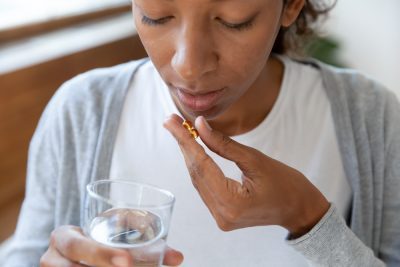Addiction, a chronic mental health condition, affects millions of Americans, and traditional treatments have often fallen short of providing lasting relief. However, a new class of medications, GLP-1 agonists, originally designed for diabetes and obesity management, shows promise as a revolutionary tool in addiction treatment.
Understanding GLP-1 agonists
GLP-1, or glucagon-like peptide-1, is a hormone produced in the digestive system that regulates appetite and insulin secretion. Medications like Ozempic and Wegovy, categorized as GLP-1 agonists, were initially developed to manage diabetes. Over time, these medications have gained recognition for their remarkable weight loss capabilities, with users shedding an average of 15% of their body weight. Currently, approximately 2% of Americans are prescribed semaglutide, a GLP-1 agonist, underscoring its widespread adoption. Beyond weight loss and diabetes management, emerging research highlights its potential role in addressing substance use disorders, a breakthrough that could reshape addiction treatment paradigms.
The overlap between eating and addiction
Scientific studies reveal a significant overlap between the brain mechanisms driving overeating and substance dependence. Both behaviors activate the brain’s reward system, responsible for pleasure and motivation. This shared pathway suggests that GLP-1 agonists, effective in reducing food cravings, could also influence substance cravings, offering a dual-purpose solution for obesity and dependency. This crossover between eating behaviors and addictive tendencies is a crucial area of exploration, as it hints at an integrated approach to tackling both issues simultaneously, leveraging insights from both obesity management and substance research.
How GLP-1 agonists may help treat addiction
Preliminary studies and anecdotal evidence suggest that GLP-1 agonists could reduce cravings for substances such as nicotine and alcohol. Users have reported decreased desires to smoke or drink, aligning with animal studies where these medications suppressed appetites for cocaine and alcohol in rats. This provides a compelling argument for further examination of GLP-1’s potential as a treatment option for addiction, especially in cases where traditional interventions have not been effective.
While these findings are encouraging, they require validation through rigorous clinical trials. Early trials have shown mixed results: One trial on smoking cessation found no significant differences between placebo and GLP-1 agonists, whereas another study revealed reduced alcohol consumption in participants with obesity and alcohol use disorder. These outcomes indicate the potential of GLP-1 agonists for specific populations but underscore the need for further research. The variability in trial outcomes highlights the complexity of addiction and points to the necessity for tailored treatment approaches that account for individual differences.
Substance use disorders impact over 48 million Americans, yet only 24% receive treatment. Existing interventions often address withdrawal symptoms or the “high” associated with drug use, leaving underlying compulsive behaviors unaddressed. GLP-1 agonists could fill this gap by targeting the brain’s reward pathways, reducing cravings, and mitigating the root causes of addiction. This approach represents a shift towards treating addiction as a condition influenced by both environmental and biological factors, moving away from stigmatizing perspectives that blame individual character flaws.
Potential impact on the opioid crisis
The opioid epidemic continues to devastate communities, with opioids accounting for 75% of overdose deaths. Integrating GLP-1 agonists with existing treatments like methadone and buprenorphine could amplify recovery efforts. By addressing the compulsive behaviors fueling addiction, these medications offer hope for reducing relapse rates and improving long-term outcomes for individuals battling opioid dependency. This integration could potentially offer a more robust recovery strategy that targets not just the physical aspects of dependency but also the psychological and behavioral triggers that sustain it.
The exploration of GLP-1 agonists’ role in addiction treatment has broader implications. By framing addiction as a chronic mental health condition rather than a moral failing, these advancements could foster empathy and reduce stigma. Medications that effectively manage cravings and reduce substance use highlight the biological underpinnings of addiction, encouraging more people to seek help and support. A shift in perception, fueled by scientific evidence and the availability of new treatment options, may inspire public health policies that prioritize compassionate, research-driven approaches to addiction.
A hopeful future
The potential of GLP-1 agonists to revolutionize addiction treatment is becoming increasingly evident. Ongoing clinical trials and studies continue to explore their efficacy, offering a promising avenue for addressing substance use disorders. If successful, these medications could save lives, improve recovery outcomes, and contribute to a more compassionate understanding of addiction. While challenges remain in proving their effectiveness across diverse populations and long-term use, the initial findings suggest that these medications could be an integral part of a comprehensive treatment plan.
As the conversation around dependency evolves, GLP-1 agonists symbolize hope for millions affected by substance use disorders. Their development marks a significant step toward destigmatizing addiction and creating more effective, holistic treatment strategies. The future of addiction treatment could well be defined by an approach that combines medical, behavioral, and psychological support, ensuring that treatment not only addresses symptoms but also empowers individuals to regain control over their lives.














